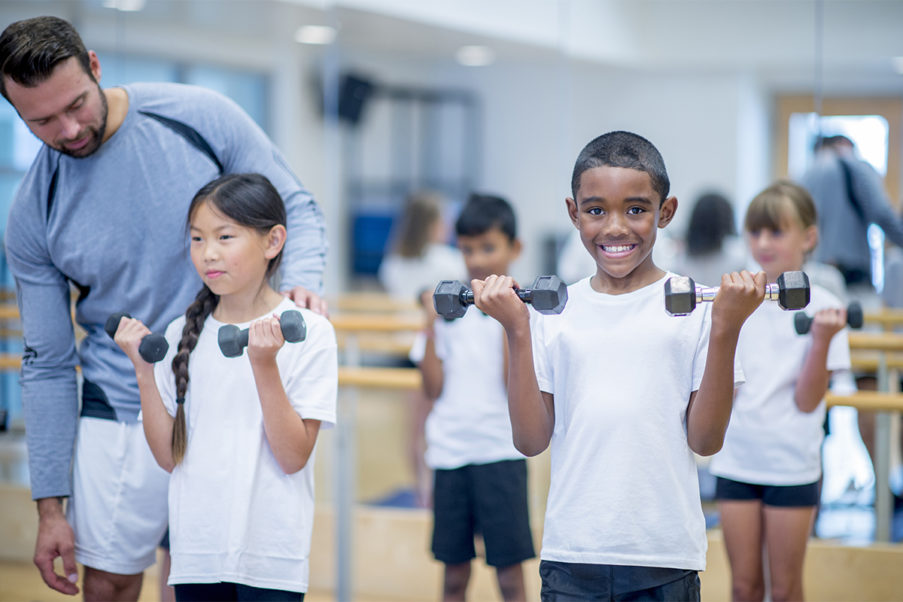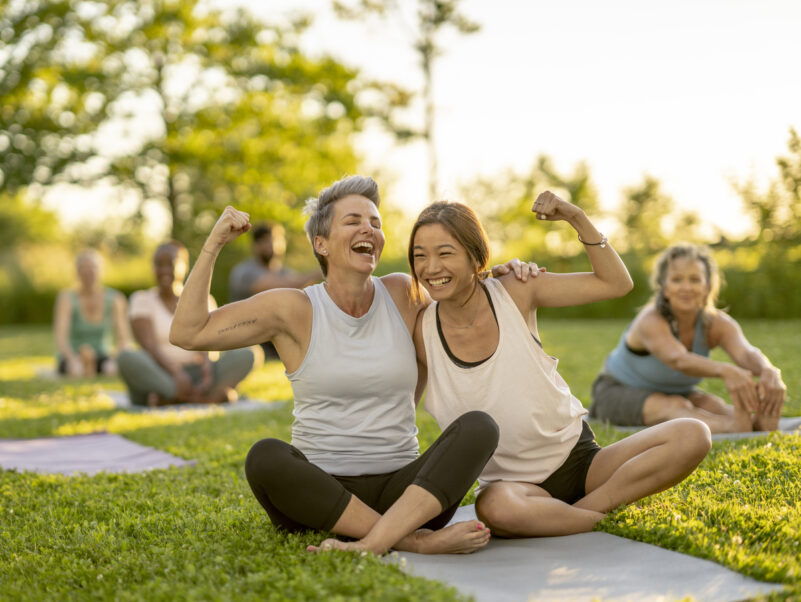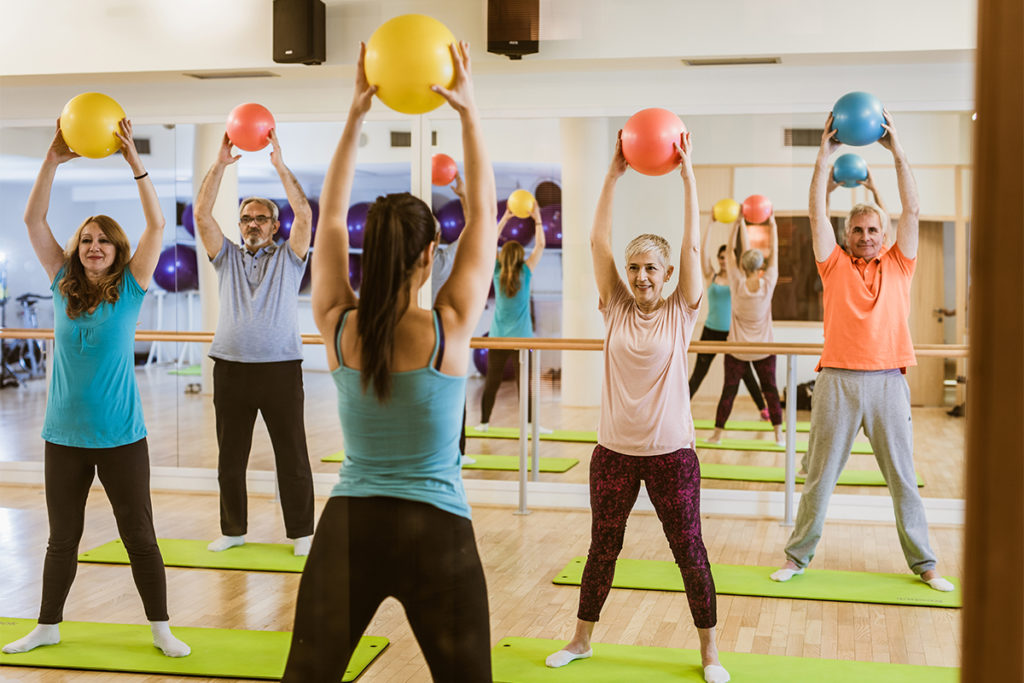International Pilates Training: Missionary of Movement
Pilates professional Michael King combines a background rich in traditional Pilates and fitness with modern principles.
For more than 30 years, Michael King has been a passionate and perceptive ambassador for the Pilates method. Reminiscent of Billy Elliot in the acclaimed movie, King grew up in Scunthorpe, England, a Northern steel town, and was the first boy from the North Lincolnshire area to become a dancer. “I loved gymnastics and swimming, but my schoolteacher did not allow me to do those sports,” says King. “You had to play soccer. My early life was miserable, but finally I joined a dance group.” That is when King’s life changed. He auditioned for, and was accepted at, the London School of Contemporary Dance. “It was after I began to dance and later hurt my back that I started doing Pilates. Pilates found me.”
The Right Movement
At the London School, King’s first Pilates teacher was Alan Herdman, who had worked with Carola Trier and Bob Fitzgerald in New York, both trained by Joseph Pilates. Herdman is credited with being the first person to take Pilates from the United States back to England (where Joseph Pilates had sown the original seeds of the method while he was interned during World War I). Of his mentor, King says, “Alan modified everything in Pilates. He taught me [to teach] a softer version. His logic was that if a person doesn’t have the body of a dancer, or is working with a physical limitation, [he or she] shouldn’t be doing the same type of movement [as a dancer]. Years later I’m still saying the same thing: all movement is good, but it has to be the right movement. A lot of people we train don’t have strong, flexible bodies. Every day I ask myself, ‘Am I facilitating safe movement? Am I teaching appropriate movement?’”
Two Worlds Collide
In the early 1980s, King opened his own exercise facility, Body Control, in connection with Pineapple Dance Studios in the Covent Garden area of London. Shortly afterward, Herdman offered him the chance to manage the Pilates studio at the Houston Ballet Company. “It was a big success,” says King. “We opened the studio to people who were not dancers, and I incorporated a fitness program at the academy [in addition to the Pilates training].”
During this period, King traveled throughout the U.S. and trained with Pilates luminaries Romana Kryzanowska, Ron Fletcher and Trier, his mentor’s former colleague. “My experience quickly showed me that the tapestry of Pilates is quite varied and diverse. Everyone I trained with was passionate about Pilates, but there were differences. However, I had always seen those differences in the method. For instance, what Alan [Herdman] did was his own version of Pilates. I tell my new students that the only person who did truly authentic Pilates was Joseph Pilates. Everyone since then has developed a variation of the method, depending on [his or her] background.”
After 10 years in Houston, King felt he needed to expand his horizons and moved to Los Angeles. The Voight Fitness and Dance Center hired him to teach fitness programs, and he also taught at various Pilates studios, including Winsor Pilates (where he worked with Mari Winsor). “It was natural for me to work with Pilates and then pop down the street to teach fitness classes,” says King. “At the time, though, they were in two separate worlds. One of my greatest joys was when those two worlds began coming together. I understand the fitness world, so making Pilates work with fitness is very logical to me.”
International Pilates Personalities
In 1995, King moved to Switzerland to teach, and a few years later he returned to London, where he founded The Pilates Institute, which now has programs and training centers in 27 countries. He left the Institute 2 years ago and moved to Uruguay to open a new studio. Of his current home he says, “It is a special place, secure both economically and politically.” Today, he observes, Pilates is practiced in many countries in the world. He has worked with hockey teams in Siberia; taught classes and workshops throughout Europe, Asia, Australia and New Zealand; and even trained an instructor in Tibet. He believes each country’s Pilates personality is different: “Sometimes it’s more mat work based, and sometimes it is more equipment based. For example, in Argentina there are hundreds of little equipment studios; they don’t teach mat.” He says that historically in England Pilates has been mat work based, although comprehensive programs that include both are now the norm. “It really depends on which instructor or school goes into a country first; that affects the country’s view of Pilates,” he says. “But at most conventions now, different schools of Pilates are represented, so people in other countries are beginning to see more variety.”
King, who has also taught in Turkey, notes that “the Turkish [people] are obsessed with Pilates. In Istanbul, especially on the European side, you will find many individual Pilates studios with the best equipment. Just like the Brazilians, the Turks love fitness. Brazil is a great market, too. It is probably the second strongest fitness market in the world [after the U.S.].” It is a different story in other countries, according to King. “For example, in India I have seen some very strange pieces they call Pilates equipment–very basic. You see the same thing in parts of China. Usually in India and China only people with money have access to fitness clubs or Pilates studios.” Wages in many countries are low, with instructors earning $2–$3 per class. “In Argentina, for instance, if someone makes $5 a class, they are well paid,” he relates.
Reflective Learning
Over the years and in many countries, King has honed his own teacher-training curriculum. In his program, which he describes as evidence based, students receive expert instruction and education in his method; then they need to prove that they’re competent and understand both the concepts and the execution. He believes reflective learning is important in Pilates education today. “I do not want people leaving my courses saying, ‘Michael King says.’ Teachers need to have confidence, not because I said it, but because they understand the information. As a teacher, you’re thinking on your feet every day and you have to know the information.”
The past 10 years have been exhilarating for King. “I’ve been training teachers in many different countries,” he shares. “But, in the end, I’ve always loved teaching clients. It is what I have always done. Training instructors is great. But you need to do both to stay in touch with yourself. It is clients who teach you how to cue, how to verbalize and how to demonstrate the work. They keep you in touch with the challenges of teaching.”





